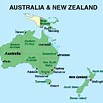 CITIG and CATAAlliance in collaboration with the Department of Foreign Affairs, Trade and Development Canada (DFATD) are organizing a Public Safety & Security ICT Trade Mission to Australia and New Zealand from September 30 to October 7, 2014. Led by senior officials from Canada’s first responder community, this mission will provide participants with an opportunity to meet with key players and gather first-hand market intelligence on Australasia’s rapidly expanding public safety and security markets within a diverse cross-section of private companies, associations, public safety agencies and public sector entities.
CITIG and CATAAlliance in collaboration with the Department of Foreign Affairs, Trade and Development Canada (DFATD) are organizing a Public Safety & Security ICT Trade Mission to Australia and New Zealand from September 30 to October 7, 2014. Led by senior officials from Canada’s first responder community, this mission will provide participants with an opportunity to meet with key players and gather first-hand market intelligence on Australasia’s rapidly expanding public safety and security markets within a diverse cross-section of private companies, associations, public safety agencies and public sector entities.
Month: May 2014
NPSTC Supports Railroad Police Access to Public Safety I/O Channels
NPSTC submitted a Petition for Rulemaking requesting modification of Part 90 of the rules to enable Railroad Police access to frequencies reserved for public safety interoperability.  The International Association Chiefs of Police (IACP) recently adopted a Resolution entitled IACP Support for Improved Railroad Police Communications. It appears that Police organizations operated by the railroads do not fall within the eligible organizations as defined in Sections 90.20. 90.617, or 90.523 of the rules. Yet, bonafide Railroad Police have an increasing need for effective and expeditious communications interoperability with members of local and state law enforcement, fire and emergency medical organizations who do meet the Commission’s eligibility requirements. Read NPSTC’s Filing Here. http://www.npstc.org/regulatoryActions.jsp
The International Association Chiefs of Police (IACP) recently adopted a Resolution entitled IACP Support for Improved Railroad Police Communications. It appears that Police organizations operated by the railroads do not fall within the eligible organizations as defined in Sections 90.20. 90.617, or 90.523 of the rules. Yet, bonafide Railroad Police have an increasing need for effective and expeditious communications interoperability with members of local and state law enforcement, fire and emergency medical organizations who do meet the Commission’s eligibility requirements. Read NPSTC’s Filing Here. http://www.npstc.org/regulatoryActions.jsp
NPSTC Files Comments on Wireless E911 Location Accuracy Requirements
NPSTC Files Comments on Wireless E911 Location Accuracy Requirements. NPSTC strongly supports the Commission’s proposal to establish accuracy requirements for E911 calls made from indoor locations. The proposed requirements will help public safety more accurately locate members of the public making E911 calls from indoor locations. In addition, the continued refinement of wireless indoor location technology should provide location mechanisms which can be leveraged to help locate first responders in need of assistance.
The Commission noted that the majority of 911 calls come from wireless phones and therefore “…it is increasingly important for Public Safety Answering Points (PSAPs) to have the ability to accurately identify the location of wireless 911 callers regardless of whether the caller is located indoors or outdoors.” The Commission proposed the following near-term and longer-term location accuracy metrics: 50 meter horizontal axis accuracy for 67% of 911 indoor calls within 2 years of rule adoption, increasing to 80% at 5 years; and 3 meter vertical axis accuracy for 67% of 911 indoor calls within 2 years of rule adoption, increasing to 80% at 5 years
NPSTC supports the Commission’s proposal to bring more focus on indoor location accuracy. Specification of location accuracy metrics is important for both the vertical and horizontal axes, and NPSTC congratulates the Commission on including both components in its proposal. Read NPSTC’s Filing Here. http://www.npstc.org/regulatoryActions.jsp
PSAPs Can Request Largest Wireless Carriers to Makes Changes to Allow Text to 911
Starting today, public safety answering points can request that the four largest U.S. wireless carriers make the necessary network changes to allow text-to-911 services within their areas, pursuant to the text-to-911 agreement reached among public safety interests and the carriers. During a conference call today, Brian Fontes, chief executive officer of the National Emergency Number Association, explained that after PSAPs make such a request, carriers will have up to 180 days to work with that requesting PSAP to provision texting to 911 in a format the PSAP has requested. Mr. Fontes noted that some carriers have already implemented changes in their networks to enable text-to-911 before today’s deadline, and some PSAPs already support text-to-911 service. Source: TRDaily, May 15, 2014
What’s the Best Path Forward for T-Band Users, by Sandra Wendelken, Mission Critical
Source: Mission Critical Magazine , May 14, 2014, by Sandra Wendelken
Although some industry insiders are pushing for an industry-designed plan to help guide the FCC on how to move forward with the issue of the UHF T-band spectrum, others said mission-critical licensees should lobby their lawmakers to change the law that created the problem.The bill that gave public safety the 700 MHz D block spectrum and created the First Responder Network Authority (FirstNet) — the Middle Class Tax Relief and Job Creation Act of 2012 — also had a stick. The legislation requires public-safety licensees in the UHF T-band spectrum to relocate out of the spectrum within nine years with relocation to be completed two years after the spectrum is competitively bid. Proceeds from auctions will be used to cover the costs to relocate the affected public-safety licensees, the bill says.
The UHF T-band (470 – 512 MHz) also includes business/industry (B/I) users and SMR operators in 11 of the largest U.S. cities. Those cities include Boston, Chicago, Dallas/Fort Worth, Houston, Los Angeles, Miami, New York, Philadelphia, Pittsburgh, San Francisco and Washington. The legislation doesn’t address B/I licensees. Continue reading
